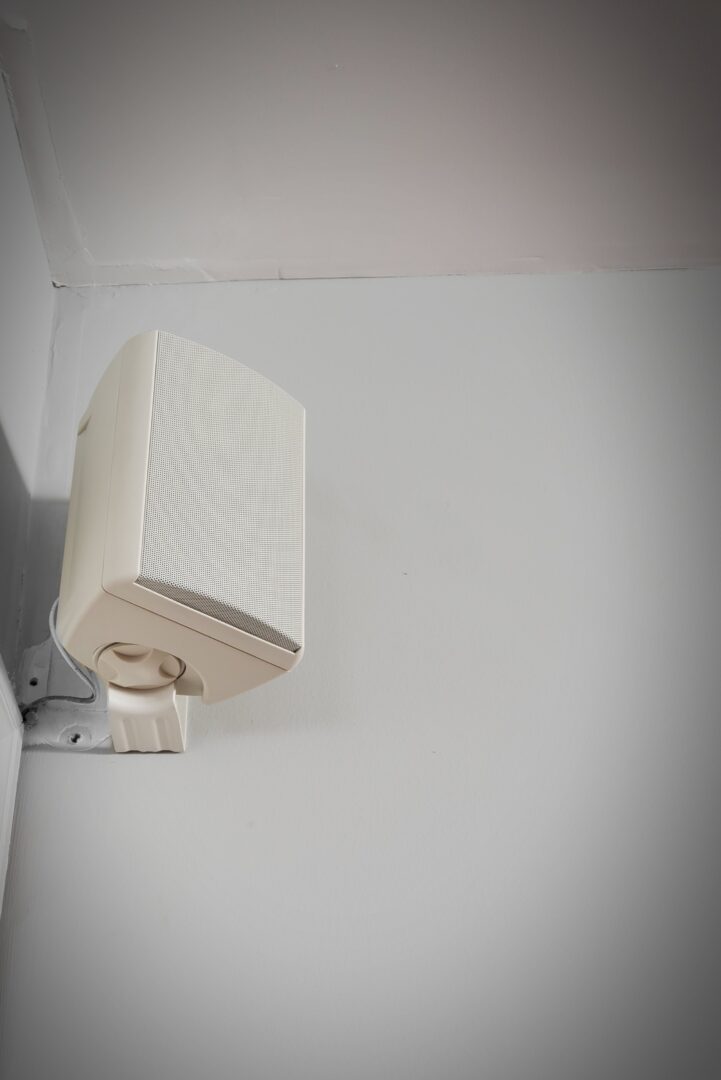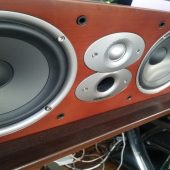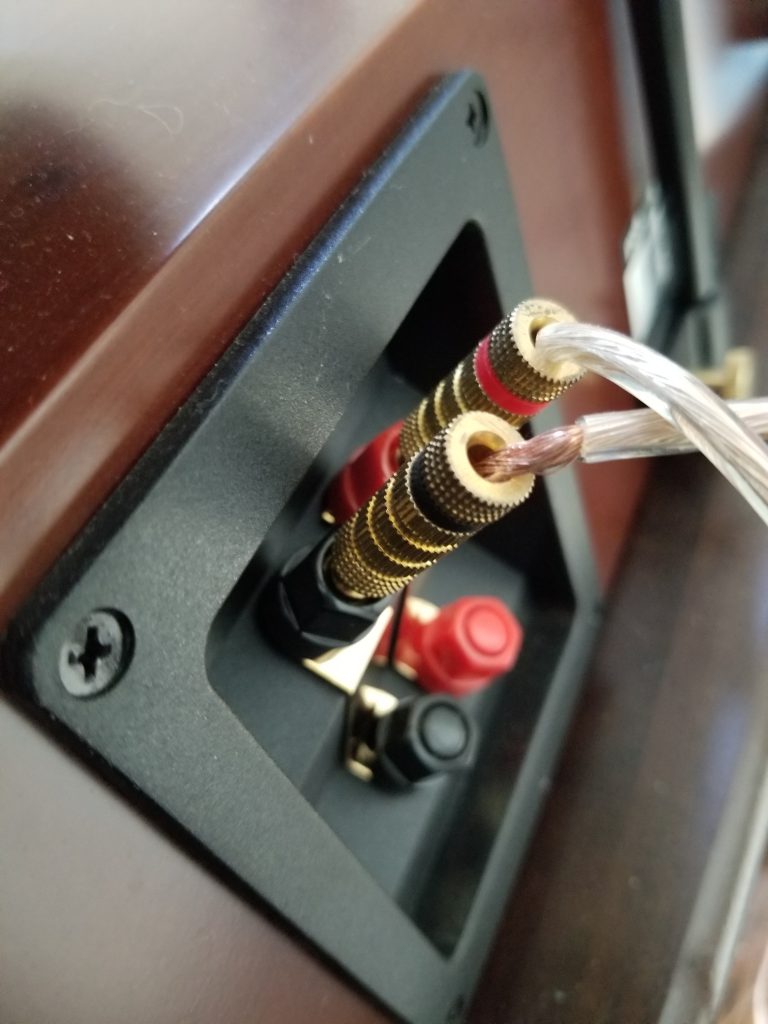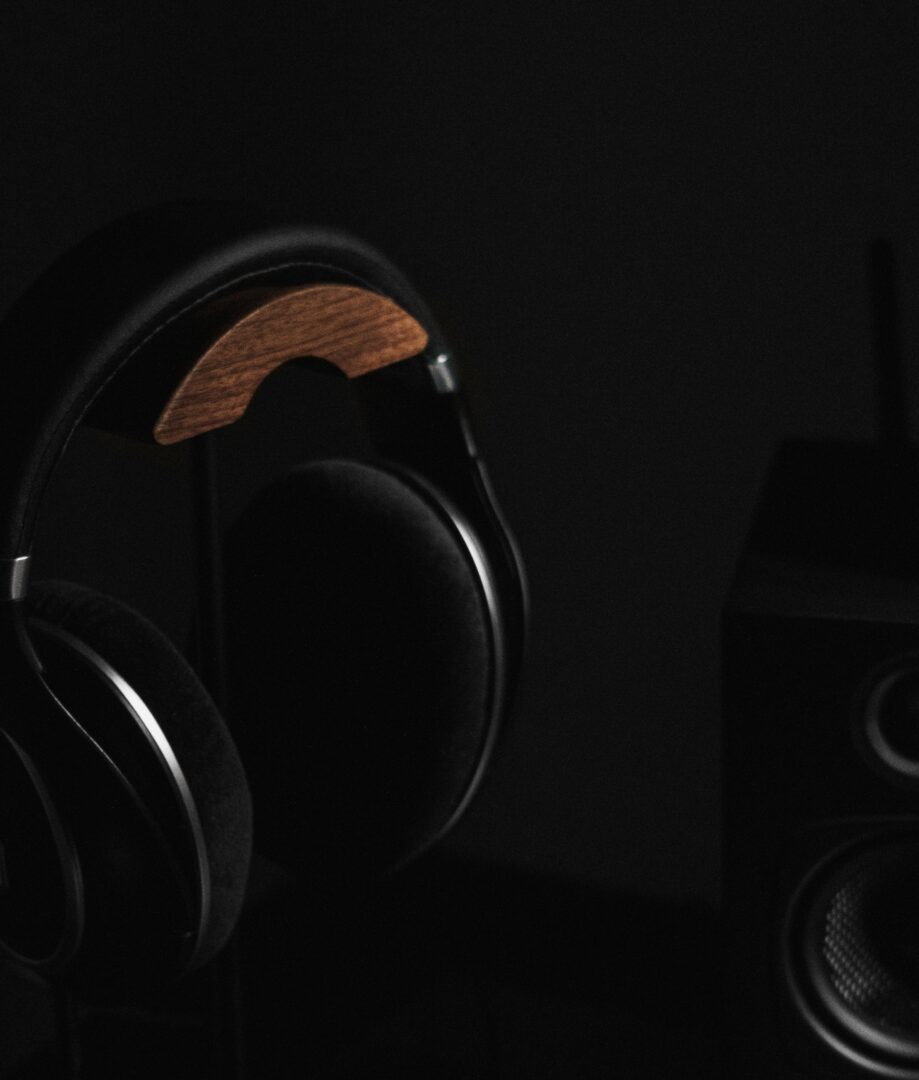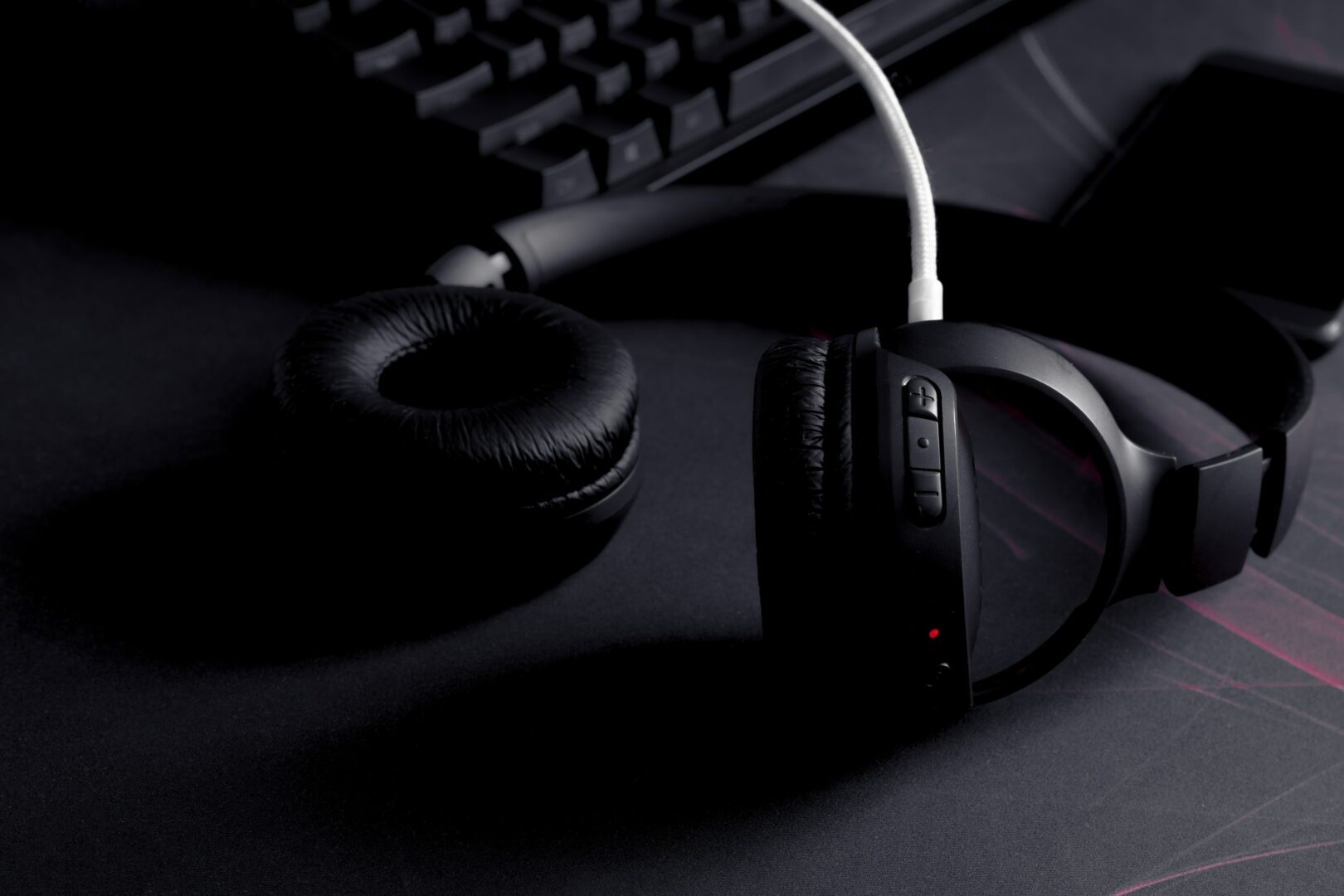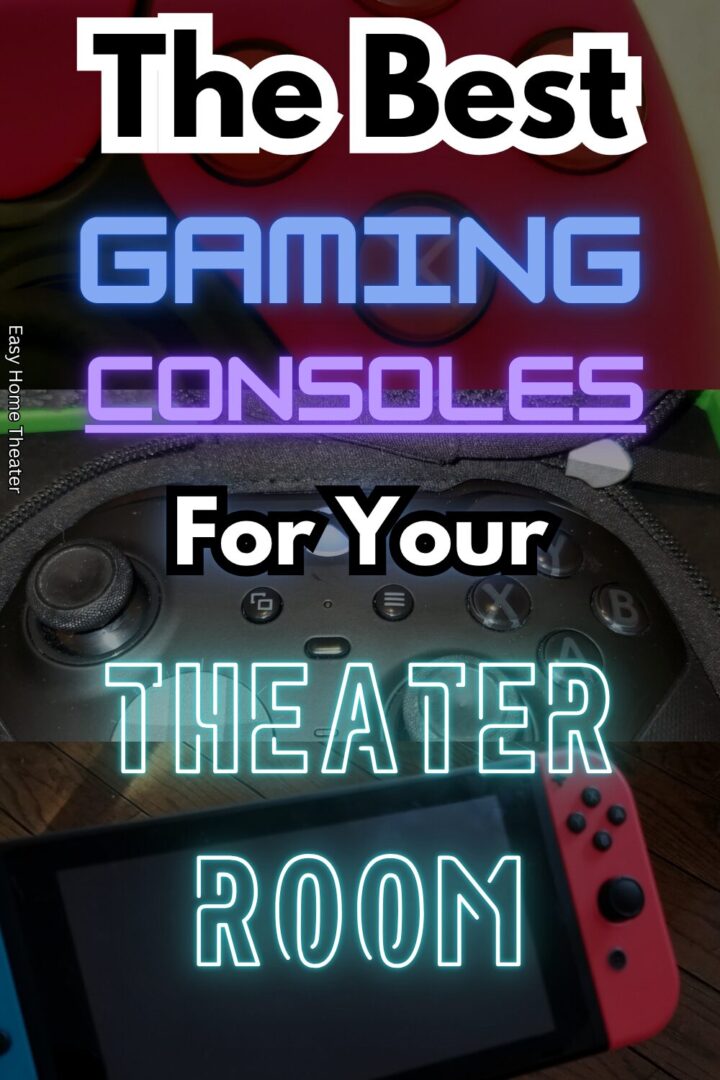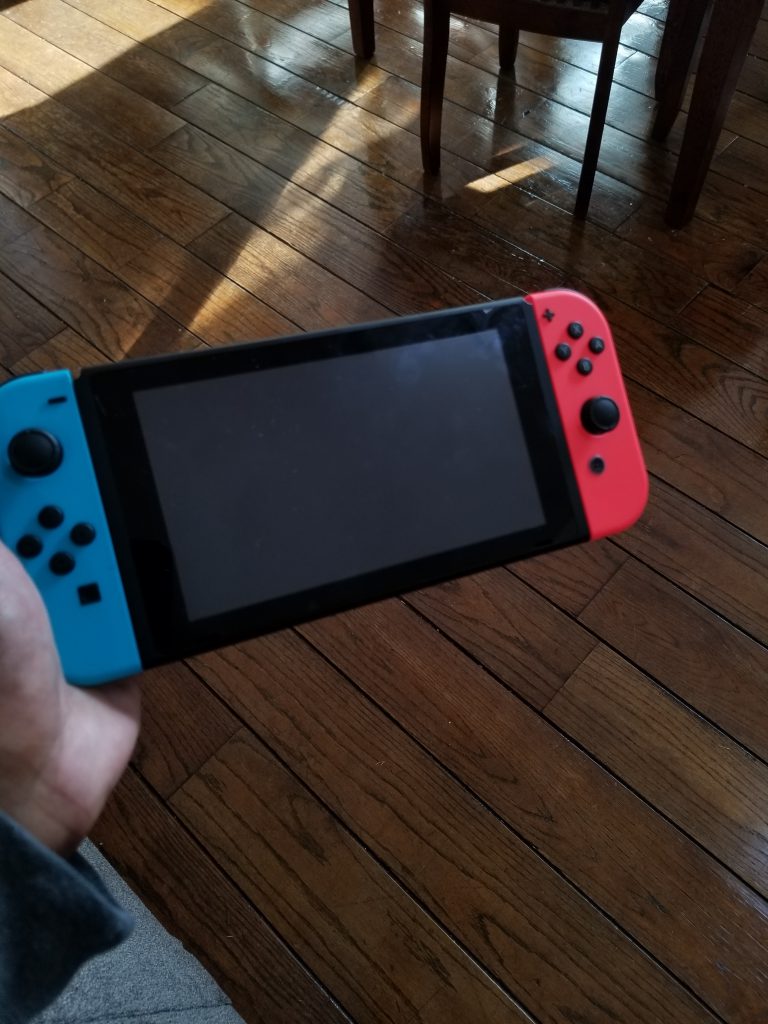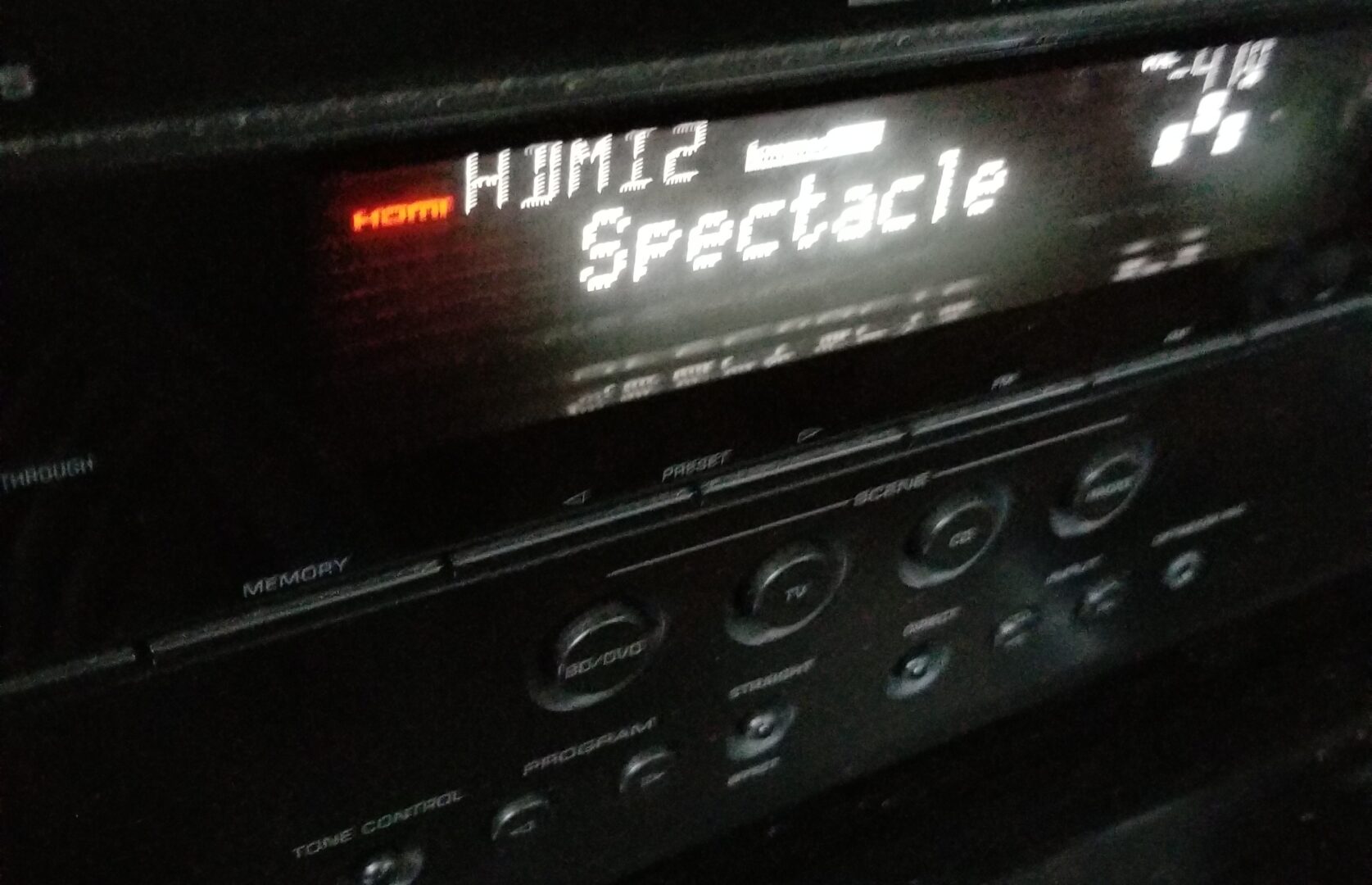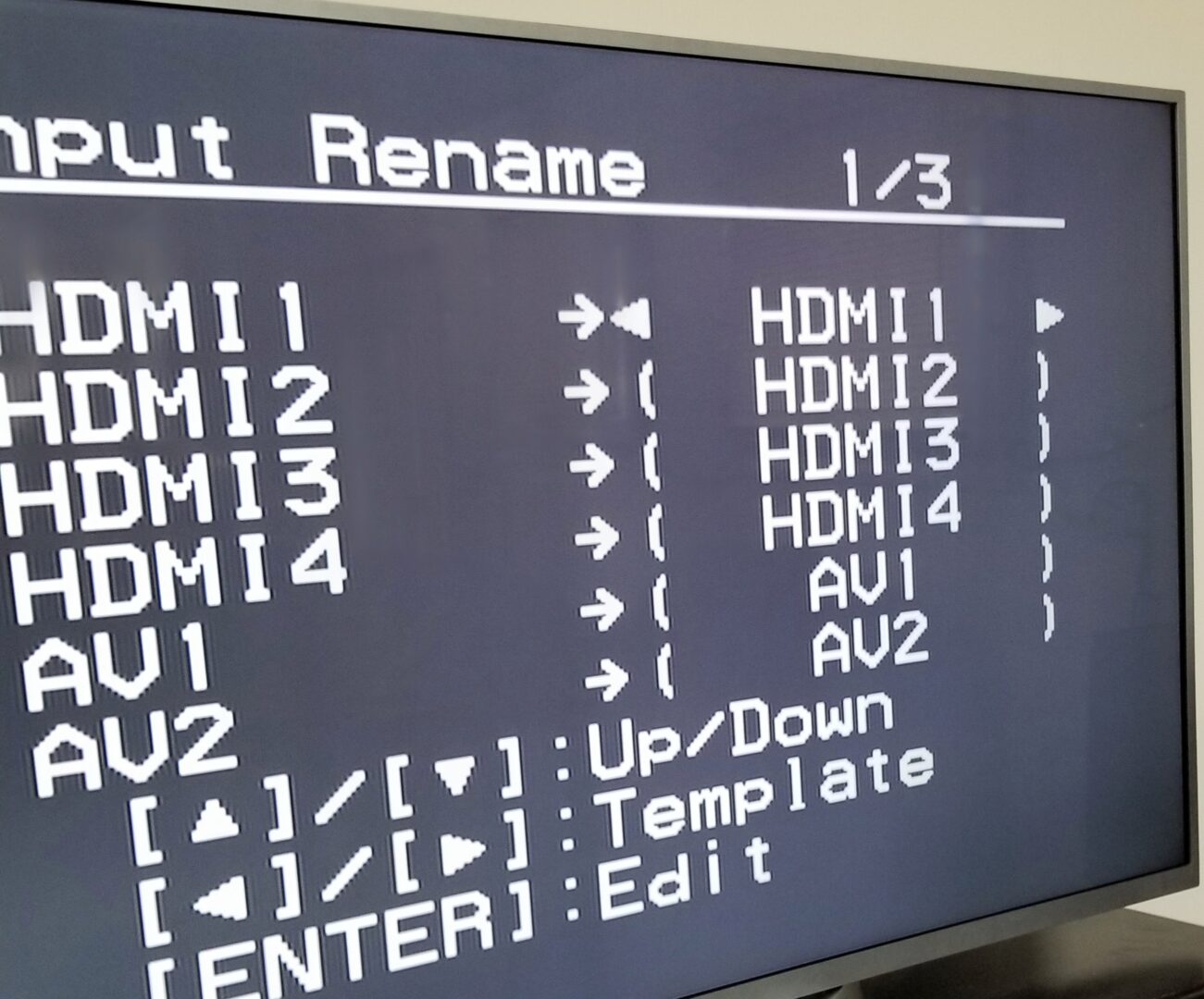The Best Bookshelf Speakers For 2025

The Best Bookshelf Speakers For 2025 (Top 10 Picks)

Whether you’re trying to create the best surround sound setup for a theater room, setup a stereo, or watch shows in the living room, the right bookshelf speakers can make a massive difference.
So today, we’ll be covering the best bookshelf speakers for 2025 in my opinion.
This will be a list of the top 10 you’ll want to consider for the year.
Obviously there’s way more than that out there worth your time, but these are just some of the ones that I feel would do great in a hifi setting.
However since there might be some out there with questions, I also wrote a guide below that goes over what a bookshelf speaker actually is and what to look for in a quality one.
Let’s get to it!
The Best For a Very Small Room (8×10 feet) – Polk Monitor XT15 (Pair)
Offering a lot in the way of audio quality, the Polk Monitor XT15 bookshelf speakers perform great in a smaller room without being overpowering.
They have a bass reflex design, which basically means their cabinet has a port to minimize distortion & provide a much clearer sound even at higher volumes.
There’s a 5.25 inch dynamically balanced woofer, and a 1 inch aluminum dome tweeter for exceptional high and low sounds.
They’re compact too at 6.5 x 7.18 x 10.6 inches & 9 pounds — allowing them to especially excel in a smaller space.
The Monitor XT15s can also be wall mounted if you wanted to set things up that way, and includes 5 way binding posts for a plethora of connection options.
This allows them to work great as front or surround speakers.
Plus there’s a removable grille that gives the speaker an either bold or subdued look.
Pros
- Great overall output that doesn’t noticeably distort at higher volumes
- 5.25 inch woofer provides a rich fulfilling sound
- 1 inch tweeter provides clear highs
- Can be wall mounted
- 5 way binding posts allow multiple connection options
Cons
- Low sensitivity at 86db
At the end of the day, this one is certainly a great choice.
Check Polk Monitor XT15 Speakers Availability (Pair)
The Best For a Small Room (10×12 feet) – Dayton Audio B452 (Pair)
The Dayton Audio B452s are quality speakers that are right at home in smaller sized rooms.
What’s cool about this pick is the fact they’re wall mountable — increasing the places they can go.
This is done via the keyhole wall hanging bracket on the back.
On the audio side of things, there’s a 4 ½ polypropylene woofer on the front that gives it a really full and rich sound.
Polypropylene is an interesting material because it acts as both a plastic and a fibrous material.
This duality allows it to be much more versatile in acoustical applications so it’s nice to see that here. https://hometheaterhifi.com/q-a/speaker-cone-material-best-performance/
There also happens to be 5/8 inch tweeter that’s great at reproducing those higher ranged frequencies that adds to immersion.
Dayton also prides itself in the quality of this speaker with its solid wood design.
I’ve talked about the benefits of an all wood cabinet many a time, but the takeaway here is that it gives you a warm sound that makes listening that much more enjoyable.
Plus the all black vinyl finish gives it a professional look.
They have a 60-watt peak, and weigh about 8 pounds.
They’re also 6 Ohms, and have a frequency rating of 85-20,000Hz allowing you to cross your subwoofer at the 80-90 Hz range.
That’s the ideal range for a sub to be set at since that’s the point where bass becomes more dispersed and omnipresent.
Overall, it’s a quality speaker with good sound.
Pros
- 4 ½ woofer provides a smooth and satisfying sound
- Tweeter for intricate details
- Wood cabinet for a warmer sound
- Looks great
- Wall mountable
Cons
- Not the greatest for larger sized rooms
- 5/8 inch tweeter is a little on the smaller side
- 6 Ohms means you’ll have to be certain you pair this with a receiver that can handle that
- Lower sensitivity at 84 means it’ll be a little harder to get this thing to go loud
But besides all that, don’t get the impression that this is a bad speaker, quite the contrary.
Like I said before, for smaller to maybe medium(ish) sized rooms, this’ll be one that works great.
Check Dayton Audio B452 Speakers Availability (Pair)
The Best For a Medium Room (14×16 feet) – Klipsch R-51M (Pair)
Klipsch is another reputable brand in the audio industry that prides itself in everything they do.
This is made evident by the high quality of products that they continuously put out.
In the case of the Klipsch R-51M, this absolutely holds true.
But why exactly?
Well the big thing about this one that makes it so different from other speakers is it uses something called a Tractrix linear travel suspension horn loaded tweeter.
To make it simple, traditional tweeters can only go to a certain size before they become too heavy and unwieldy for the speaker’s cabinet.
But with a horn variant, the diaphragm itself is recessed with a larger flared casing around it.
What that does is amplify any audio that then gets output.
Basically think of what happens when you use a megaphone, your voice is able to go louder because of that flared design.
Same kind of idea here.
It’s a pretty interesting concept that does work well ultimately. http://www.klipsch.com/blog/how-do-horn-loaded-speakers-work
The real benefit here is that this allows it to be extremely accurate, letting you hear every single little detail.
The R-51M comes with a copper injection molded graphite (IMG) woofer that while looks amazing of course, manages to pump out some serious sound.
What’s particularly interesting as well is the port in the back.
This port is tuned to the enclosure itself and acts as way to minimize unwanted noise; meaning you get less distortion and a clearer sound.
A 5-way binding post in the back is included luckily, which means that you can use any connection type with it.
In terms of looks, the copper driver is a striking difference from the brushed, all black outer and makes for a good looking presentation for sure.
In terms of measurements it comes in at 8.5 x 7 x 13.3 inches and weighs about 11 pounds.
Pros
- Aesthetically pleasing
- 1 inch horn loaded tweeter for more accurate sound
- 5.25 inch copper drivers offer respectable output
- Port in the back minimizes unwanted noise
Cons
- Not wall mountable
Overall in terms of quality, this is an excellent speaker.
Check Klipsch R-51M Bookshelf Speakers Availability (Pair)
The Best For a Medium-Large Room (16×20 feet) – KEF Q150 (Pair)
This KEF Q150 is right at home in the medium to large room range.
What’s unique about this one is its Uni-Q driver array which basically arranges the tweeter in front of the midrange driver in a concentric pattern.
This allows for increased clarity and accuracy over what’s normally possible since the sound comes from a single point rather than 2 different points.
The 1 inch tweeter & 5.25 inch woofer also handles a wide frequency range from 51 Hz to 28 kHz.
As a result, your movies and shows will really come to life with all of the additional detail available.
There’s also a port in the back that helps to reduce chuffing (that’s when unwanted noise muddies the original sound)
The cabinet itself is a beautiful MDF wood grain that really feels premium to the touch.
You should also be aware beforehand that they aren’t the smallest things in the world though at 11.9 inches high and 11 inches deep, hence their medium to large room rating.
They’re also heavy at 25 pounds.
Thus you’ll definitely want the space for them.
Pros
- Fantastic sound
- Concentric driver is capable of getting loud
- Looks Great
- 5-way binding post offers a variety of ways to connect wire
Cons
- Not the smallest thing in the world at almost a foot tall.
- On the heavier side at 12.3 pounds each.
For a medium or average sized room, these things will excel. I’d highly recommend them in general.
Check KEF Q150 Speakers Availability (Pair)
The Best For a Large Room (22×25 feet) – SVS Ultra Evolution (Pair)
Now we’re getting into to the big boys capable of some serious power.
For those with larger rooms, the SVS Ultra Evolution is going to be a solid pick to go with.
So the first thing that’s awesome about this speaker its large 6.5 inch mid-range driver.
To give you an idea of how driver size affects audio, this an awesome article on that. https://hometheaterhifi.com/q-a/speaker-enclosure-size-effect-on-audio-quality/
But this is an awesome thing for you because what you get is not only more power, but more effortless power at that.
What’s particularly great about these speaker’s drivers is they’re made of a glass fiber composite that’s stiff, so at higher volumes, there’s less flex for a better quality sound.
What you’ll immediately notice is how rich the sound is with things like voices and sound effects.
But upon closer inspection, you’ll also notice how many intricate details it can reproduce as well thanks to its diamond carbon coated 1 inch tweeter that’s able to go up to 40kHz.
To put it into perspective of just how powerful these speakers are though, normally I’d recommend getting a speaker that can at least go down to the 80 Hz range.
Well this one can go down to 40hz too!
If you don’t realize what that means for you, that means that you can actually use these without a subwoofer since they go so low in output.
They’re also capable of outputting up to 150 watts.
These speakers are also unique looking with an angled cabinet that’s time aligned — meaning the drivers are aligned so the sound from both arrive at your ears simultaneously.
This allows them to sound not only more accurate, but more cohesive too.
The grille is also curved, and is magnetic & removable so you can leave it on or off.
Pros
- Rich sound with 6.5 inch drivers
- Can reproduce higher range sounds thanks to their 1 inch diamond coated tweeters
- Wide frequency range from 40hz to 40kHz
- Time aligned cabinet for better acoustical Imaging
Cons
- Rather heavy at 18.8 pounds each
- Very big at 11.25 x 8.66 x 14.88 inches so you will certainly need to set up the space beforehand
Still if you have a large room, these would be the ones to get.
They’re able to produce a very full and clear sound that makes them extremely hard to resist.
Check SVS Ultra Evolution Speakers Availability (Pair)
The Best For a Very Large (22x 28 feet) – JBL Studio 630 (Single Speaker)
This is going to be one for those of you with the largest of rooms.
JBL is another really great brand in the audio industry where their equipment continuously speaks volumes about their attention to quality overall.
The Studio 630 has a 6.5 inch woofer capable of going as low as 45 Hz.
That means it’s entirely possible to use them without a subwoofer all together.
But it’s not just the lows that contribute to its incredible output.
There’s a 1-inch high frequency compression tweeter here as well that’s capable of producing some extremely clear sound effects.
When you head over to the spec sheet, it makes sense why since it can play up to 40 kHz.
To give you an idea of just how good that is, most speakers tend to only go up to about 25k kHz, so that’s way above the norm.
It uses what they call HDI (High Definition Imaging) to produce a sound-stage that almost seems surreal at times.
It also has a peak wattage of about 300, so it can go plenty loud if you needed it to.
It also measures 11.02 x 9.05 x 14.65 inches and weighs 19.84 pounds.
Pros
- Superb overall sound quality
- 300 watts peak output for larger rooms
- Capable of some serious output with the ability to go down 45 Hz
- Can be used as a stereo system without a subwoofer
- 1-inch tweeter combined with signature HDI technology allows you to hear an incredible range of details
- Looks great
Cons
- Low sensitivity of 85db means you’ll need a somewhat powerful receiver
- Not wall mountable
Besides those 2 things, the Studio 630 is certainly an amazing speaker.
Check JBL Studio 630 Bookshelf Availability (Single Speaker)
The Best Looking – Klipsch Reference Premiere RP-600M II (Pair)
So I don’t normally place an emphasis on how good a speaker looks, but in this case I had to.
The Klipsch RP-600M is one of, if not some of the best looking ones I’ve personally come across.
Whether you choose them in piano black, ebony, or walnut, they look gorgeous regardless.
Luckily it’s not all looks with this one either as they’re a serious performer.
There’s a 6.5-inch copper woofer that sounds as good as it looks.
6.5 inches is pretty big for a bookshelf speaker driver, so this lets it reach frequencies that smaller drivers typically don’t reach.
How low you might wonder?
Try 45 Hz.
That’s good enough to not need a subwoofer all together which is really impressive.
Klipsch’s signature linear travel suspension tweeter also makes an appearance.
This offers improved clarity and immersion by directing the sound directly at the listener.
But on top of that, their signature tractrix horn is included as well.
This further disperses the sound resulting in a much wider sound-stage overall.
There’s also a removable grill as well though to be honest with you, I personally think it looks better without one (but that’s just me)
Pros
- Incredible sound
- Can go down to 44 Hz thanks to its large 6.5-inch woofer
- 1 inch tweeter allows it to reproduce a wide range of detail
- Tractrix horn adds to the purity of the sound
- Beautiful outer cabinet regardless of the color
Cons
- Pretty heavy at 18.1 pounds each
- 15.75 inches tall and 13 inches deep so they’re pretty big
Other than how impressively big they are, these would be right at home in larger rooms.
Yes, they’re beautiful, but what they’re capable of is just as amazing.
Check Klipsch RP-600M II Bookshelf Speakers Availability (Pair)
The Best Powered/Active – Edifier R1280T (Pair)
If you’re more so looking for active speakers, then the Edifier R1280Ts are great in that regard.
That’s because their versatility in not only their sound quality, but in connectivity options allows it be used in a wide variety of settings.
With 2 3.5mm RCA & AUX outputs, they can be connected to a TV, phone, PC, etc. as long as they support it.
With a 4 inch woofer, and 13mm silk dome tweeter, you’re able to get clear sound whether they’re used up close or as a set of stereo speakers.
Plus the EQ knobs on the side and wireless volume remote allows you to further dial in your sound.
They also look solid made from an MDF wood that gives them a classy look in my opinion.
Pros
- Great sound quality
- Can be used with devices that support AUX & RCA
- Treble, bass, & volume knobs on side to adjust sound
- Work great as desktop or stereo speakers
- They look good
Cons
- .5 inch tweeter might not provide the most intricate details at highest frequency levels at high volumes
Check Edifier R1280T Availability (Pair)
The Best Nearfield – Yamaha HS-5 W 5-Inch Powered Studio Monitor (Pair)
For nearfield or up close listening, I think the Yamaha HS-5 bookshelf speakers are a good fit.
The reason being is their predecessors already set precedence for being exceptional speakers for music, production, or stereo sound.
The HS-5s certainly continue this trend with incredibly accurate and pristine sound that allows you to hear plenty of detail.
This is made possible with their 5 inch woofers and 1 inch tweeter that work in tandem to deliver a pleasing sound quality.
Their flat frequency response and 70 watt output makes them especially good for professional listening or mixing.
Plus with XLR & TRS inputs, you can use the cables you want for pure audio fidelity.
Pros
- Accurate and pure sound makes them great for nearfield listening
- Flat frequency response for professional listening
- Powerful output at 70 watts
- XLR & TRS inputs
- Manageable size at 6.7 x 11.2 x 8.7 inches
Cons
- Doesn’t work with typical speaker wire
- No passivity
Check Yamaha HS-5 Availability (Pair)
The Best High-End Model – ELAC Uni-fi Reference 3 Way (Pair)
The ELAC UReference 3 way would have to be the best higher end models in my opinion.
To say that it looks nice in person would be an understatement.
But to state that it sounds great would be even more so.
So what makes it great?
Well one thing that could attribute to that would be the way it’s built all together.
It happens to implement what’s called a 3-way design in the audio world.
To simplify what that means, just think of it as a fancy way of saying it has a separate driver for the bass, treble, and mid-range.
By doing it this way, what you are then able to do essentially is reproduce more detail all around. http://www.proaudioland.com/news/2-way-versus-3-way-speaker-systems/
There’s a 6.5-inch inch aluminum woofer that is able to do an exceptional job handling bass.
By using aluminum, they are able to go lower without the trouble of additional unwanted resonance.
Plus a stiffened front baffle further reduces these resonances for clearer sound.
A 1 inch soft dome tweeter is placed inside a 4 inch mid-range driver. This is called a concentric design.
Another benefit of this design is an improved sound-stage for off axis listening.
Obviously not everyone sits directly in front of their speakers, so the fact that ELAC was able to take this into account as well is truly awesome.
That means a better listening experience for everybody.
The dual flared slot port on the back also allows the Uni-fi to output lower cleaner bass.
There’s even a 5-way binding post that makes the promise of providing clearer connections between the connector and the terminal.
Pros
- High end sound provides a premium sound quality
- Gorgeous cabinet
- 140 watt peak gives them the capability to get loud
- Unique tweeter inside the mid-range design allows for more articulation and better off axis listening.
- 3-way build provides for much more accuracy
- 5-way binding posts for a plethora of connection options
Cons
- Heavy at 26 pounds each
- Large at nearly 14.13 inches tall and nearly 13.15 inches deep
- Low sensitivity at 85db
Still, if you’re in the market for a higher end option, this is a solid choice.
Check ELAC Uni-fi Reference 3 Way Availability (Pair)
What Exactly Is A Bookshelf Speaker?
Well to put it simply, a bookshelf speaker is a speaker that’s designed to rest on a desk or shelf rather than the floor.
They’re often used in home theaters and stereo setups.
But that’s not their only difference from the other types out there.
For example, a larger floorstanding speaker typically isn’t placed on anything since they’re designed to stand from the floor.
Whereas a computer speaker typically only has one driver for all the frequencies.
This is different from non home based speakers such as in a car where their drivers are concentric in design.
The differences between car and home speakers highlight how specific design considerations impact a speaker’s performance in different environments.
But with a bookshelf variant, there’s usually a tweeter for the higher frequencies (treble), and a woofer for the mid-range frequencies (known as a 2 way design)
In 3 way designs, speakers also have a bass driver.
The drivers are separated like this because it allows for more accuracy, and better sound quality overall.
There may even be a port that filters out unwanted noise (often called a bass reflex design).
Some can even be wall mounted or placed on stands.
It’s this level of versatility in their placement that allows them to be incorporated in a wide variety of audio setups.
The History Behind Their Start
Now believe it or not, home theater didn’t start out with these though since it started out with the larger floor-standing models.
Unsurprisingly, they weren’t the most home friendly due to their sheer size and weight.
It wasn’t until the early 1960’s when a man by the name of Edgar Villchur realized this could be improved and created a speaker that while small, retained a lot of the full range sound the bigger one had. https://www.stereophile.com/interviews/105villchur/index.html
As you could probably imagine, this was not an easy thing to do.
Basically what he did was create an enclosure that was nearly airtight.
What this did was pressurize the inside, creating additional force against the driver allowing for a lot of output in a small space.
Today there’s many different variations on that formula, but this was the original idea that started it all.
Their Placement Matters
Before we get into how to choose one, keep in mind that their placement is nearly just as important as room acoustics can greatly affect their soundstage.
For example, it’s generally not recommended to stack bookshelf speakers on top of each other, as this can negatively impact the audio quality.
If you’re curious about why, you can check out this article on stacking bookshelf speakers.
Nor do you want to use 2 of them as a center channel as it’s better to pair them with one.
You also don’t want to place them too close to the wall, but the right distance depends on whether they’re sealed or ported designs, and the location of those ports.
Their placement can even affect their perceived bass output too, so taking the time to adjust them is important.
They also vary in size, but often balance performance and size to accommodate their placement in setups where larger tower speakers might not fit.
Plus their wide range of options from the budget friendly to the high end makes them an appealing option for a broad audience.
All of these factors make them a popular choice for surround sound in living rooms, as part of desktop setups, and as standalone stereo systems.
So, with all of these designs that exist, what do you look for in a good bookshelf speaker?
Consider The Price Relative To What You Need
So the first thing that’s obviously important to keep in mind in your search is the price.
But what’s particularly important to consider is the price relative to what you actually need since there’s a wide variety of bookshelf speakers at different levels in price.
Although price tiers could technically be broken down into budget friendly, mid-range, and high-end, the issue is that’s subjective since each person’s budget is different.
I’ve also noticed from over the years that price isn’t always indicative of quality or lack of since things like branding and unique manufacturing processes play a part.
So what I would do is first set a hard budget, then consider the things you’re specifically looking for in a speaker within that budget you set.
That way you have a mental note beforehand of the ideal speaker you’d want.
Try To Look For A Speaker Cabinet Made Of MDF or HDF Wood
The next thing that’s helpful for a quality hifi experience is getting is getting a speaker whose cabinet is made of MDF or HDF wood.
MDF stands for medium density fibreboard, and is created by essentially compressing wood fibers and resin into a solid object.
This is different from some speakers that are now vintage or retro as they often used some form of plywood, particleboard, or some other material.
While it depends on the construction quality, sometimes these materials would allow a lot of extra vibration that could affect the sound.
The usage of MDF wood in modern speakers is generally beneficial because it dramatically decreases the amount of unwanted noise that can occur normally.
For those who don’t know, whenever you get a sound that travels through something, it causes that object to vibrate.
This vibration can cause additional noise.
That’s especially problematic if you’re a manufacturer attempting to create a speaker that sounds as good as possible.
Fortunately, MDF helps to minimize that issue.
This reduction in resonances from MDF’s density gives the speaker more clarity overall.
You can read more about it here if curious.
HDF meanwhile stands for high density fibreboard and is similar to MDF except it’s a higher density.
This gives the speaker even more rigidity to reduce noise, but the effort in manufacturing it can come at a premium.
Keep In Mind The Ohm And Watt Rating
The next thing you’ll want to do is be aware of both the wattage and Ohm rating for the speaker you’re considering.
Wattage is simply a measure of how much power it may consume to produce audio.
Ohms is a measure of the resistance an audio component has to produce an output.
While there’s no set in stone wattage number you should be aiming for, make sure the receiver it’s paired with supports it’s Ohm rating at that wattage.
For example, you might see a receiver that states that it supports 80 watts per channel at 8 Ohms.
What that means is that for each speaker, it can give it up to 80 watts of power at that ohm level.
But what happens if you use that same receiver with a speaker that’s rated at say 4 Ohms?
Well at normal volumes you may be fine, but what will end up happening at even slightly higher volumes is something called clipping.
Clipping is where sonic fidelity is reduced, and distortion starts to occur because the receiver is too under powered for the speaker, or vice versa.
Besides a worse quality sound, there’s a good chance it could break both of them all together.
It’s a common reason why speakers stop working from what I’ve noticed.
So you should be sure that whatever receiver you use supports that speaker’s Ohm rating.
You may even see ones that state it supports multiple Ohms ratings, and that’s even better because it’s less that you’ll have to worry about.
Pretty simple so far right?
Whether You Want A Passive Or Active Speaker
Another thing to consider when deciding on a good bookshelf speaker is whether you want a passive or active one.
What’s the difference?
Active Speakers
An active speaker, often referred to as powered, has what’s known as an amplifier internally.
This is basically a device that’s designed to amplify the sound produced by the speakers from the original audio source.
This type of speaker doesn’t need external sources of power like a receiver to function since its self powered.
Many bluetooth speakers are actively powered, with some even being wireless.
Though as a side note, many traditional speakers can technically be made wireless too.
Passive Speakers
On the other hand a passive speaker is one that does require an external power source or receiver to function.
They’re also the one you’re most likely to run into since they’re a lot more common.
How To Choose Which Of Those Is Right For You
The advantage of an active speaker is that you won’t need to pair a receiver with them, but the disadvantage is that they aren’t upgradable; meaning if it isn’t capable of going loud enough for a particular room then you’re out of luck.
Also if the amplifier inside dies, then the speaker itself becomes unusable.
A passive variant doesn’t have this issue.
The advantage of a passive speaker is that if it isn’t loud enough, you can always pair it with a different amplifier or receiver so it can go louder, making it much more versatile.
The disadvantage of course, is that you’d need receiver for them to work.
I personally prefer passive speakers with home theater specifically because of that versatility, but it really is dependent on what you plan to use them for.
If you’re planning to use them for gaming or listening to music on a desktop for example, then active ones might work better because of their ease of use
For watching movies on the couch, passive ones may be better since they can be paired with powerful external amplifiers to drive them.
Even then, that’s just speaking generally since every speaker is different.
Get A Speaker With A Higher Sensitivity
You’ll also want to keep in mind your new potential speaker’s sensitivity rating.
Think of the sensitivity as a measurement of how easy it is to get to a certain volume.
You’ll typically see it referenced in decibels.
The higher this number, the louder it’ll get with less power.
This is important because if you get a speaker with a really low sensitivity with an underpowered receiver, you’ll end up clipping the sound just to get it to a reasonable listening level.
The opposite is true too.
If you get one that’s too high, you’ll end up blowing the internals.
I’ve personally found a good sensitivity rating to be between 83-96db. I feel like that’s the sweet spot to choose between.
Look For One With A Wide Frequency Response
Oh yeah, and one quick bonus thing before we wrap up — while nowhere near as important as with subwoofers, the frequency response is also something you’ll want to at least be aware of.
This is the total sound range it’s capable of producing.
Now while there’s no real set range to look for, ideally you’d want the widest one possible.
But here’s a specific tip; look for a speaker that can at least go down to 80 Hz.
Why?
Well if you’re using a subwoofer, this is the cutoff point where the sub takes over and isn’t localize-able (meaning you can’t tell where it’s coming from)
It’s also a common point to set your crossover (the internal circuitry that controls high and low frequency frequencies)
By getting a speaker that can go at least that low, you’ll be able to set your sub at 80hz to then take on the lower frequencies from there.
I’ve noticed that speakers with bigger drivers often have the widest frequency ranges and highest volumes.
But that’s not to say that clarity is solely dictated by driver size, but it is a factor in its performance.
Like a speaker with an 8 inch woofer and large tweeter is more likely to be able to handle a wide sound range generally speaking.
Final Thoughts
Whew! Hopefully all of that helps in regards on how to actually choose the right bookshelf speaker.
So the ones on this list adhere to the things we talked about, while being fantastic choices overall.
I realize that there’s a lot of options out there, but from my experience thus far, these will be solid ones to check out.
Also just in case you have any trouble with your new stuff, I did an article covering a lot of the typical issues that you may potentially run into; along with some tips on how to fix them. https://easyhometheater.net/common-home-theater-problems
If you need help with actually setting them up, then I also did a post on that talking about the actual set up process. https://easyhometheater.net/how-to-set-up-a-home-theater
Hopefully all of that helps.
Until next time, make it easy, keep it simple!


